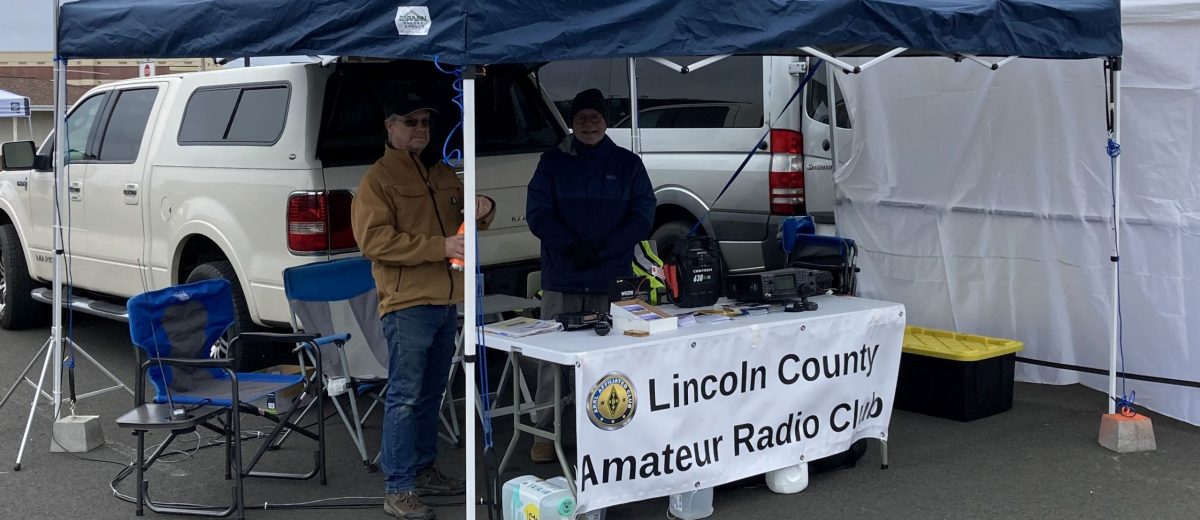“You sure do talk funny.”
Chuck Gerttula W7CRG
I was 17 and the product of having been raised in a small coastal town in Oregon. I loved history, particularly American history and was fascinated with the Civil War (also known in certain regions as the War Between the States or the War for Southern Independence) An organization in Lake Oswego offered student tours to the east coast to visit many of the places where United States history began. I was fortunate to get to go on one of the American Heritage two week tours with 50 or 60 other young students from the Pacific Northwest.
The train delivered us to Washington D.C. and we were ensconced in a hotel with two to four students in a room. The hotel had a cafeteria downstairs and being teenagers we were eager for some breakfast. As I moved my tray down the line I got a serving of hash browns, eggs … and then I arrived at the meat choices. “I think I’ll have the ham,” I announced.
“Yo’all sure do talk funny, honey child! Where yo’all frum?”
Me talk funny? She was the one with the drawling accent! Yes, I had a lot to learn about my fellow Americans. I learned about different ways to speak, different types of food, I was not supposed to use certain drinking fountains or restrooms and I was not to sit in certain seats.
So how does this relate to ham radio you ask? Well, as hams … “We sure do talk funny.” I was asked how to pronounce the word embroidered on my hat … it was my first call sign “KF7WZV”. I smiled and told the checker at Freddy’s it was an inside joke. That aside, we do use a lot of slang, jargon, call it what you may, and it can be confusing to the new and uninitiated.
Therefore, I’ll be a bit of an elmer and explain some of our jargon. An elmer is a mentor. Someone who helps, teaches and explains the technicalities, information and traditions of ham radio.
Roger is a term used to indicate understanding. Many hams will repeat this thus broadcasting “roger roger” which either means they want to fill their transmission so they don’t appear to have little to say, they are talking to a ham named Roger or it is a poor connection and they have to repeat the words to be understood. Roger is often thought to be the same thing as QSL. That is not the case. QSL indicates receipt and was a means of showing an operator had received the message or transmission from another operator. For many hams exchanging QSL cards which confirmed the time, quality and frequency of a contact was an important part of the hobby.
Perhaps this is a good time to explain the “Q” codes were created when CW or code was the primary means of communication. They were universal codes that shortened the message which is nice when you are sending letter by letter in code. It is so much easier to sent QSL than to send “I have received your transmission”. The same can be said for “7 3” which is sending two characters instead of tapping out “It has been nice talking with you and thank you for the contact”.
Have you heard someone say something like, “that is one of the funniest stories I have ever heard, hi hi”? This is another CW usage that has carried over to phone. If you want to laugh on a phone transmission, the microphone will send your laughter. If your transmitter sends dots and dashes how do you indicate laughing? The convention was to send hi hi (…. ..) (…. ..). Why some use this on phone transmissions I can not say; they should just laugh.
Here are some commonly used phrases, many of which started with CW but are now common on Phone:
ragchew a long discussion over any topic or topics
full-quieting your transmission has no background noise
picket fence the transmission has a fluttering to it
kerchunk a short press of the PTT (Push To Talk) often used to see if the radio is getting into the repeater.
boat anchor an old radio, usually tube type and very heavy.
silent key a ham who has passed away
OM used in CW for Old Man which is a ham
YL used in CW for a female operator, a Young Lady
XYL used in CW for wife
DX D for distance and X for unknown (Asian contact is DX)
The Q codes are good examples of CW terms moving into the realm of Phone conversations. Most of these three letter codes are not frequently used on phone but a few are.
QSO is a contact
QRM is interference from other stations or “M Man made”
QRN is interference from static and other “natural N” causes
QSY is changing frequency “I’m QSYing to 14.255 mHz”
QTH is the station’s location “My QTH is Toledo, OR”
QRP designates low power or to lower power
QST A general call for a message to all hams, which fits for the name of the ARRL magazine
ARRL The American Radio Relay League not the Amateur Radio Relay League
CQ A general call to any station that would respond. Amateur lore has many ideas for the origin of CQ, a popular one is it is from the expression “Seek You”.
Perhaps this will help some better understand the conversations both on the air and at an eyeball qso (face-to-face conversation). Perhaps it is unnecessary as you know these terms well. If any of this makes you more comfortable and better to understand your fellow hams – great! Get on the air and communicate with people from around the block to across the oceans!
Chuck Gerttula W7CRG President LCARC
